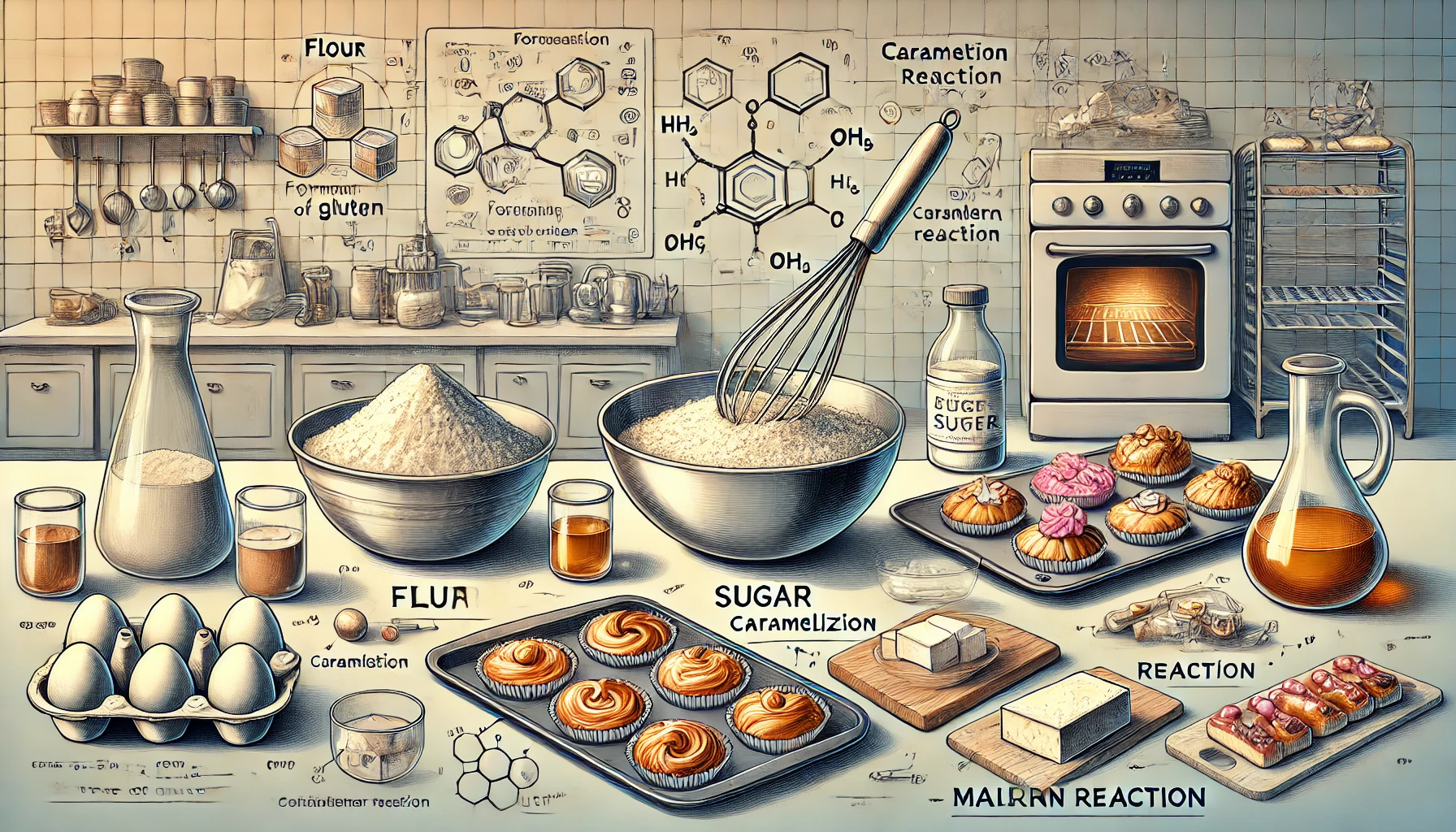The Intricate Balance of Art and Science in Baking
Baking merges creativity with precise scientific principles. While imaginative flair is essential, grasping the underlying chemistry of components and their interactions can transform your baking from pleasing to exceptional. This examination focuses on the scientific aspects of baking, revealing the interplay between various elements and the transformative chemical reactions that lead to scrumptious baked creations.
1. Understanding Fundamental Ingredients Flour Flour acts as the backbone for most baking endeavors. It forms gluten, a mesh of proteins that captures air and bestows dough with stretchiness and resilience.
- Flour Varieties: Each type of flour contains different levels of protein, influencing gluten creation. High-protein bread flour yields chewier textures, whereas low-protein cake flour is designed for soft baked goods.
- Gluten Dynamics: Mixing flour with water leads to the amalgamation of glutenin and gliadin proteins into gluten. The act of kneading aligns these proteins into a sturdy, stretchy lattice.
Sugar Sugar’s role transcends mere sweetness, affecting consistency, hue, and the ability to hold moisture.
- Caramelization: Heating sugar initiates caramelization, enriching color and flavor.
- Maillard Reaction: At elevated temperatures, sugar and proteins engage in the Maillard reaction, resulting in a flavorful browning.
- Moisture Control: Due to its hygroscopic nature, sugar draws in and maintains moisture, ensuring softness in baked goods.
Eggs Eggs serve multiple purposes: they enhance structure, introduce air, add color, and enrich taste.
- Protein Solidification: Heat coagulates egg proteins, adding firmness and stability.
- Emulsification: With lecithin, eggs help unify fats and liquids for a cohesive batter.
- Aeration: Whisking eggs traps air, which helps with the rising process during baking.
Fats Fats bring flavor, softness, and layers to baked treats.
- Fat Varieties: Different fats such as butter, shortening, and oils have distinct influences. Butter contributes taste and moisture, shortening ensures softness, and oil maintains moistness.
- Layering Effect: In layered pastries, fat separates the dough, melting in the oven to leave airy pockets that create flakiness.
Leavening Agents These substances instigate the rise in baked goods by generating gas.
- Baking Soda: A base that requires an acidic counterpart to release carbon dioxide.
- Baking Powder: Combines an acid and a base, producing gas when moist and heated.
- Yeast: A fermenting organism that breaks down sugars, releasing carbon dioxide and alcohol, causing the dough to rise.
2. The Baking Procedure Mixing Techniques Proper mixing is critical for uniform ingredient dispersion and optimal gluten formation.
- Creaming Method: Whipping fat with sugar introduces air, aiding leavening and texture.
- Folding Approach: Careful blending maintains air pockets, vital for airy baked goods such as soufflés.
Temperature Management The behavior of ingredients and the success of chemical reactions are temperature-dependent.
- Ingredient State: Ingredients at room temperature blend more smoothly, while colder items promote flaky textures.
- Oven Heat: A preheated oven is essential for the correct rise and desired consistency.
Baking Dynamics A myriad of chemical reactions unfolds during the baking phase.
- Protein and Starch Changes: Heat sets proteins and causes starches to swell, offering structure.
- Gas and Moisture Shifts: Expanding gases and evaporating moisture contribute to the rise and lightness.
- Crust Development: The surface dries and sugars caramelize, crafting an appealing crust.
3. Addressing Baking Challenges with Chemistry Collapsing Centers
- Cause: Inadequate leavening or excessive mixing.
- Remedy: Measure leavening agents accurately and mix just enough to maintain airiness.
Dryness or Brittleness
- Cause: Overcooking or lack of fats.
- Remedy: Watch the baking time and ensure sufficient fat is used.
Heaviness
- Cause: Insufficient gluten or leavening.
- Remedy: Mix thoroughly and verify leavening agents are fresh.
Irregular Rising
- Cause: Inconsistent oven heat or uneven mixing of ingredients.
- Remedy: Check oven temperatures with a thermometer and achieve uniform ingredient integration.
4. Secrets to Impeccable Baked Goods Precision is Key
- Measuring: Employ a kitchen scale for precise ingredient proportions. Baking demands exactness.
- Timing: Adhere to recommended mixing and baking intervals.
Patience and Experimentation
- Trial and Error: Embrace experiments and learn from failures. Comprehending baking science aids in problem-solving.
- Patience: Allow doughs the necessary resting and fermentation time. Hastening the process can compromise the end product.
Conclusion Baking represents a captivating mixture of artistry and scientific insight. By embracing the chemistry that underpins the ingredients and their processes, you can refine your baking craft and consistently turn out flawless pastries. Whether you’re just starting or you’re a skilled pastry expert, incorporating the science of baking will bolster your abilities and enhance your creations. So when you next set out to bake, appreciate the chemical artistry at play and savor the delectable outcomes.
